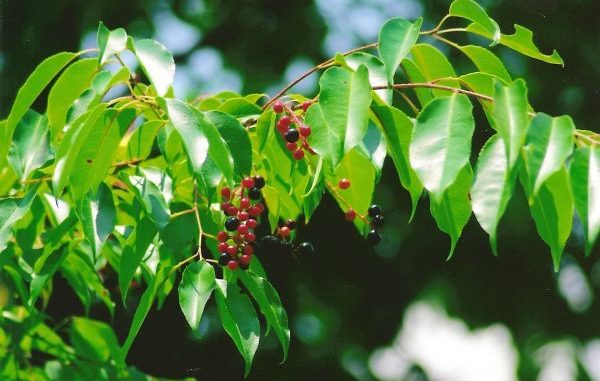
As previously mentioned, deer eat a large variety of plant species but there are a few that deer really prefer in the state’s forest. The following is a list of 12 woody species that I believe the deer manager should key on in the management program. This list does not include the herbaceous plant species (forbs) that deer frequently eat; however, if the deer manager is doing the right habitat work, these species will occur across the landscape during the different seasons of the year.
Elderberry – Deer will readily browse this shrub and eat the fruit it produces. In fact, this is a species that deer can impact on the habitat and it will only be found on those locations where deer cannot get to it. If it is missing it is time to start investigating why.
Smilax or greenbriar – This plant is found throughout the state and provides year-round forage for the deer.
Rubus (blackberry and dewberry) – This is another plant that provides year-round food for the deer and the berries are also eaten by deer in the spring and summer.
Honeysuckle – There are two species of honeysuckle, the Japanese variety which was introduced and the native coral honeysuckle. Japanese honeysuckle is readily eaten by deer and can even disappear if the browsing pressure is too high.
Trumpet Creeper – A common vine across the state and provides good nutrition for the deer.
Water Oak – While most species of oak are important to deer, Water Oak is the common one found across the state and the stems of the young seedlings are readily eaten by deer and of course the acorn is highly preferred.
Yellow jessamine – This vine is also common across the state and its green foliage provides year-round forage for deer. The best use that I see is in late winter when many other woody species are dormant.
Privet – While this plant is considered an invasive species and can create problems for the forest, it is heavily eaten by deer and provides year-round forage. A good heavy duty gas pruner is a great tool to have to keep this shrub in check around food plots and the edge of the woods.
American Beautyberry or French Mulberry – The new growth of this shrub is readily eaten and the purple fruits are relished in the fall by deer.
Black Cherry – Young seedlings are frequently browsed and this tree produces fruit at a young age in the spring that are eaten by deer. Keep it in the sun for best growth and fruit production.
Blackgum – Another good browse species and the fruit is also eaten by deer in the fall. There are several varieties of this tree, the upland variety in the pine woods and Swamp Blackgum in the cypress/tupelo forests.
Vitis or grape – A common vine in our forests of which there are several species that deer utilize for food, both browse and the fruits in late summer. Muscadine is the one most hunters are familiar with.
These are my desirable dozen; if I were going to produce a top 20 list I would include maple, elm, hackberry, ash, deciduous holly, red mulberry, arrow-wood and the dogwoods. It will be interesting to see what plants LDWF comes up with when they finish their plant nutrition study.


